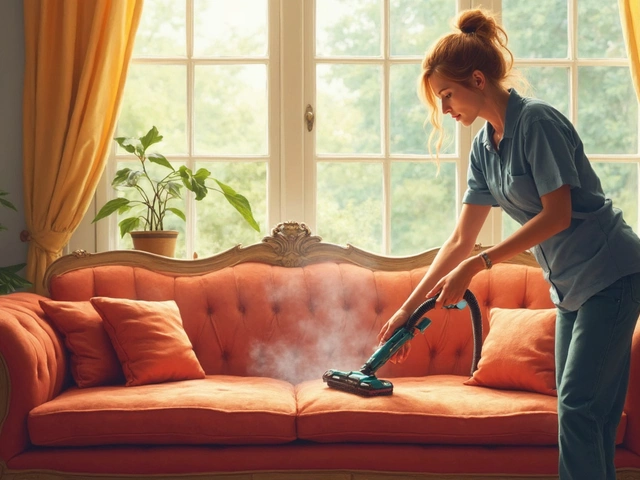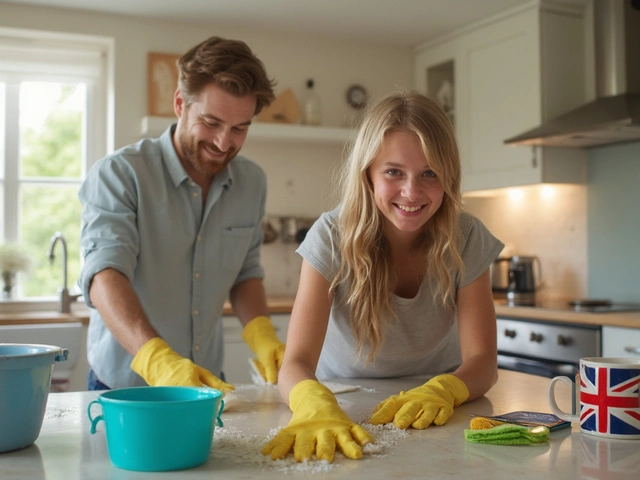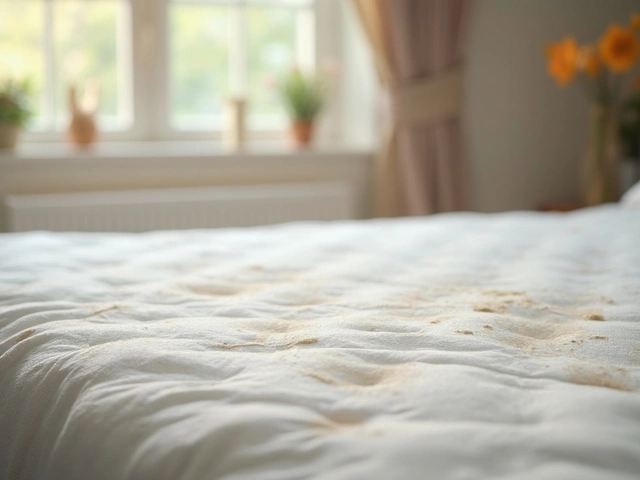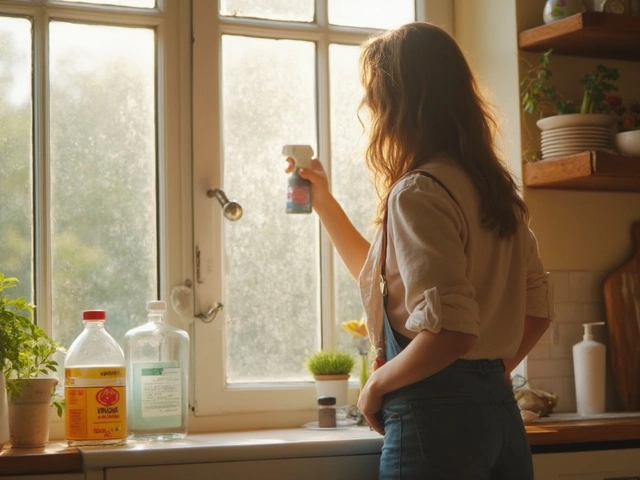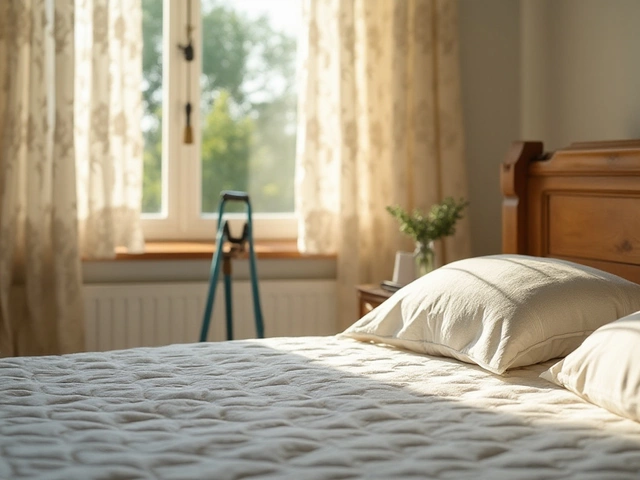So, you're staring at that unsettling stain on your favorite couch, wondering if Dawn soap, the miracle worker in your kitchen, can come to the rescue. You're not alone. Many folks turn to Dawn because it's already in the cupboard and has a reputation for being tough on grease but gentle on surfaces.
Here's the thing about Dawn: it's not just good at cleaning dishes. Its effectiveness in cutting through grease makes it a versatile tool in the cleaning arsenal. Chances are, if it can handle greasy pots and pans, it might just help refresh your upholstery too.
Before you dunk your couch in soap, though, let’s chat about the types of upholstery you're dealing with. Different fabrics react differently to cleaning agents, so understanding what your furniture is made of is crucial. Get this right, and you're halfway to a spick-and-span setup without any damage.
- Why Consider Dawn Soap for Upholstery?
- The Science Behind Dawn Soap
- How to Use Dawn for Different Fabrics
- Safety Tips and Precautions
- Alternative Cleaning Solutions
Why Consider Dawn Soap for Upholstery?
Let’s face it, Dawn soap isn’t just any dishwashing liquid. It's been the secret weapon in many kitchens and has even played a role in wildlife rescue missions, cleaning oil-soaked birds. So, what gives it this superpower?
First off, Dawn is great at cutting through grease, which is why it's a hit among homemakers. Grease isn’t just found on your dishes—body oils, food spills, and random marks on your sofa are all basically grease in different clothing. If Dawn can slice through last night's lasagna plate, it stands a chance against that pizza stain on your couch.
Ingredients That Work Magic
The magic lies in its surfactants, the compounds that reduce surface tension in water, making it better at wetting surfaces and lifting dirt. In simple terms, these compounds are like tiny warriors, prying off and holding grease until it can be washed away.
Safe for Most Fabrics
What's more, upholstery cleaning with Dawn is generally safe for many fabric types. It's gentle enough not to strip fibers of their color while still being effective at stain removal. Always check your furniture’s cleaning code to ensure compatibility, though.
Budget-Friendly Solution
One major advantage is that it’s an economical option. No need to splurge on special cleaners when you’ve got Dawn in your cupboard. Those dollars saved can go towards something fun, like movie night popcorn (but maybe eat it away from the couch this time).
Don’t just take my word for it—you can find tons of user testimonials online praising its virtues. And if you’re a data person, consider a simple experiment: try a small, inconspicuous area first and see the results for yourself. If it's good enough for oil spills, it might just be perfect for your home cleaning conundrum.
The Science Behind Dawn Soap
So, what's the magic in Dawn soap? Simply put, it's about how it tackles grease and grime. The secret lies in surfactants. These are agents in the soap that reduce the surface tension of water, allowing it to spread more easily and break up stubborn stains.
Now, with upholstery cleaning, this is exactly what you need. Grease and oils can often lead to some of the most stubborn stains, and Dawn is acclaimed for its ability to handle even the slickest messes. When you mix Dawn with water, it creates a powerful solution that allows the soap molecules to surround and lift dirt away from surfaces, like your couch.
Balanced Formulation
Another reason people turn to Dawn for cleaning—beyond dishes—is its pH balance. Many cleaning solutions can be either too acidic or basic, potentially damaging the fabric. Dawn is formulated to be gentle, making it less likely to harm your favorite furniture when used correctly.
Biodegradability and Safety
Want to feel a bit better about the environment while cleaning? Dawn's also known for its biodegradable surfactants, meaning it's not just effective, but safer for the planet too. While powerful on stains, it's gentle on the outdoor flora and fauna, which is why it's famously used for cleaning wildlife and handling oil spills.
| Component | Function |
|---|---|
| Surfactants | Reduce water tension and lift stains |
| Biodegradability | Eco-friendly and safe for wildlife |
| pH Balance | Gentle on fabrics |
All this talk about chemical makeup might sound like a lot of science jargon, but the takeaway? Dawn keeps things simple, effective, and a tad cleaner for Mother Earth. If that’s not a win-win, I’m not sure what is.
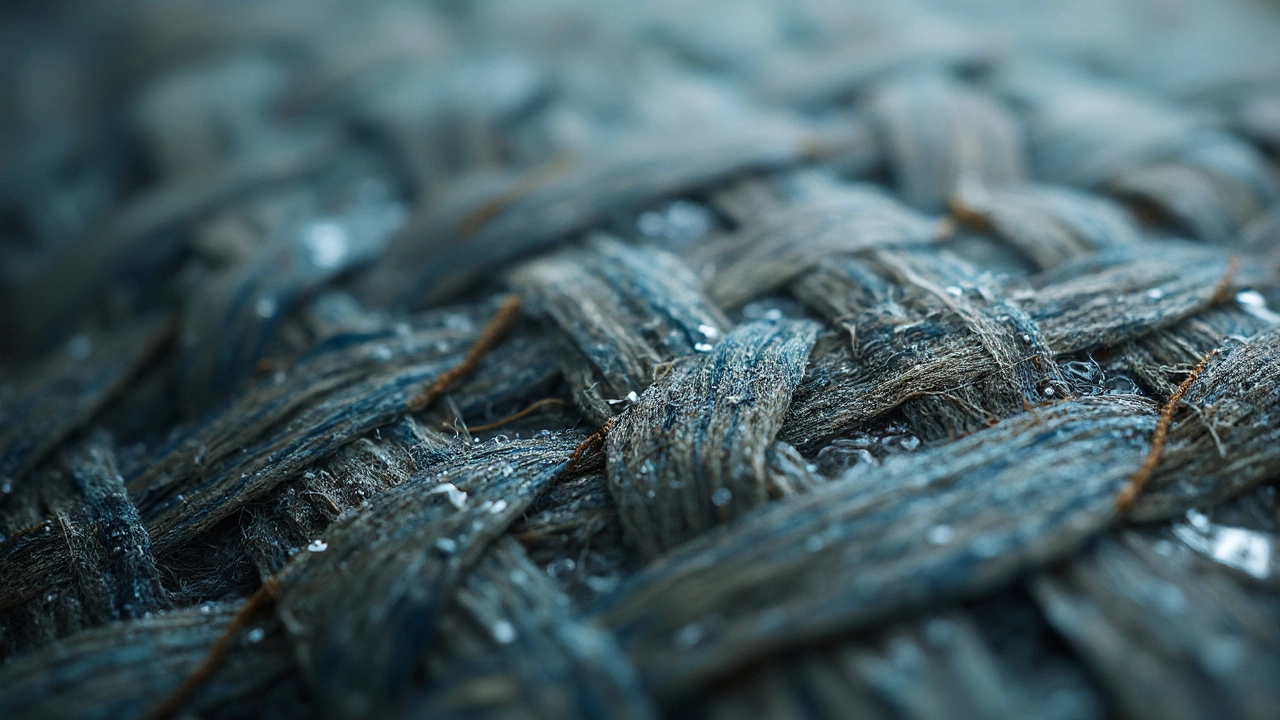
How to Use Dawn for Different Fabrics
When it comes to upholstery cleaning, different fabrics need different approaches. Let's break it down so you can tackle those pesky stains without causing any damage.
1. Cotton and Polyester Blends
These fabrics are generally quite tough, making them a good candidate for a Dawn soap treatment. Here's how you can do it:
- Mix a teaspoon of Dawn with two cups of warm water.
- Using a clean cloth, dab the solution onto a hidden spot first. This is a test to ensure there's no discoloration.
- If all looks good, gently blot the stain with the cloth, making sure not to soak the fabric.
- Rinse the spot with a cloth dipped in clean water, then let it air dry.
2. Wool and Delicate Fabrics
Wool is a bit more sensitive and needs extra care. Dawn can still help, but with a bit of caution:
- Mix a tiny amount of Dawn, like just a few drops, with a quart of cool water.
- Test this mixture on a less visible area first.
- Dampen a cloth with the solution and gently dab at the stain. Avoid scrubbing.
- Rinse with a damp cloth soaked in cool water and leave it to dry naturally.
3. Leather Upholstery
Leather's a whole different ballgame. Using Dawn directly can strip it of its natural oils, so be cautious:
Skip the Dawn cleaning entirely and opt for a leather-specific cleaner. If you're set on using Dawn, mix it with water and test it in an inconspicuous area first. But really, go easy on this one.
Handy Tip
If you're ever unsure, always do a spot test. Better safe than sorry!
Safety Tips and Precautions
While Dawn soap is pretty friendly, there are some things to keep in mind to keep both your upholstery and yourself out of trouble. You don't want to end up with a bigger problem than the stain you started with!
Spot Test First
First thing's first: always spot test any cleaning product, even something as gentle as Dawn soap. Find a little corner or a hidden part of your upholstery and dab on a small amount of the diluted solution. Keep an eye on it for a day to check if it reacts in a weird way, like discoloring or damaging the fabric.
Be Gentle with Different Fabrics
- Microfiber: It's usually safe to use Dawn soap on microfiber. Just use a soft cloth and go easy on the scrubbing.
- Leather: Be cautious here. Leather can be finicky, so you might want to use a cleaner specifically made for it, or very diluted Dawn soap.
- Silk: Avoid using any soap on silk upholstery. It's too delicate and can be easily damaged.
Ventilation is Key
You'll want to keep the area well ventilated, especially if you're working on a big piece like a couch. It's common sense but opening a few windows helps the furniture dry faster and keeps the air fresh in your home.
Watch the Water
Moisture is a sneaky foe for upholsteries. Use as little water as possible when mixing your Dawn soap solution. Too much water can soak into the cushions and hide beneath the fabric, fostering mold and mildew. Keep the damping to a minimum.
Eye on the Clock
Avoid letting your cleaning solution sit for too long on the fabric. An overly long exposure might lead to fading or weakening of the fabric. A quick blot and dab should do the trick.
The bottom line? While Dawn soap does wonders, a bit of caution goes a long way in keeping your upholstery looking snazzy and new. Stay vigilant and your furniture will thank you!
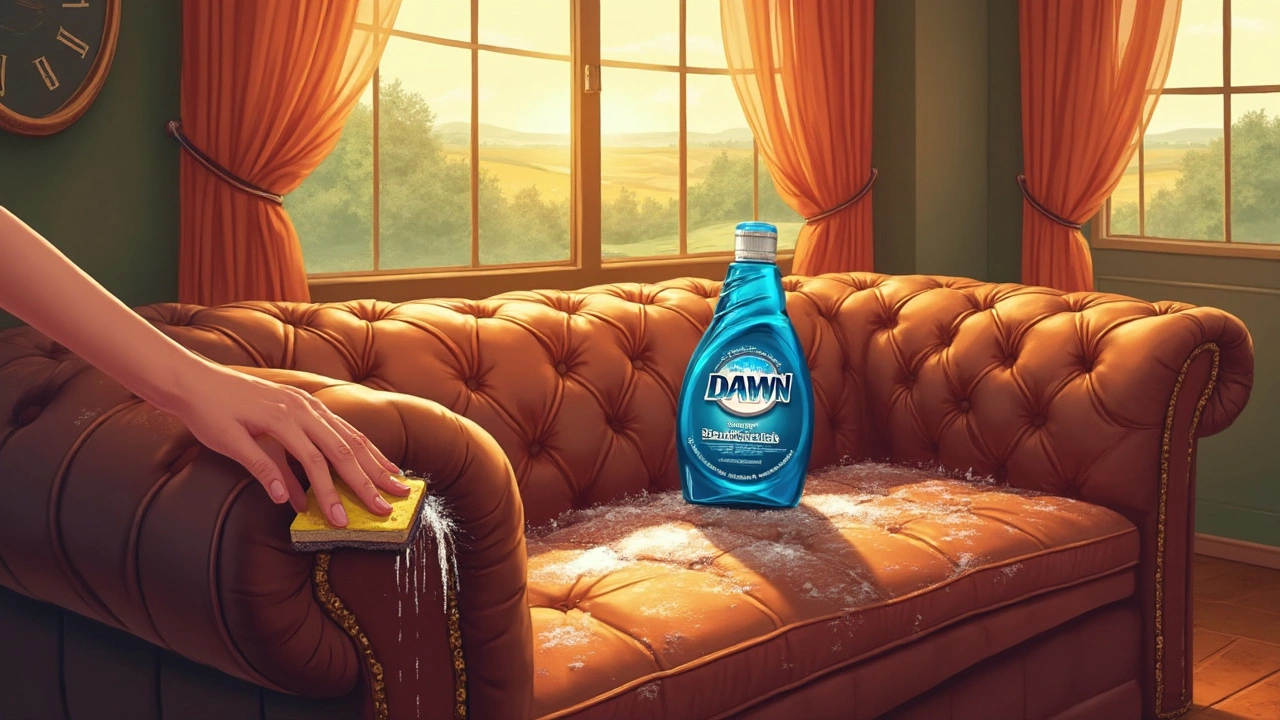
Alternative Cleaning Solutions
While Dawn soap can be a savior, it's always good to have a few backup plans for those stubborn stains or when you're dealing with delicate upholstery.
Vinegar and Baking Soda
These two are a dynamic duo for tackling tough stains. White vinegar can act as a natural cleaner and deodorizer, while baking soda is fantastic at lifting stains. Here's how you can use them:
- Mix one part vinegar with two parts water in a spray bottle.
- Sprinkle baking soda generously over the stain.
- Lightly spray the vinegar solution over the baking soda. It will fizz — that's the magic happening!
- Let it sit for about 15 minutes, then blot with a clean, damp cloth.
Rubbing Alcohol for Microfiber
If you have microfiber, rubbing alcohol can be your best friend. It's quick-drying and often works wonders on stains.
Simply pour some rubbing alcohol into a spray bottle, spray it lightly over the stain, and then scrub gently with a white sponge or cloth. Once dry, use a bristle brush to fluff the fabric back up.
Club Soda for Fabric Upholstery
Got club soda in your fridge? Give it a try on fabric upholstery. It's great for removing coffee and other simple stains.
- Apply club soda directly to the stain.
- Let it fizz for a minute.
- Blot with a clean towel until the stain lifts.
Professional Products for the Toughest Jobs
If these DIY tactics don't cut it, there are some top-notch products on the market designed specifically for upholstery cleaning. Bissell and Hoover have great upholstery cleaners with enzyme-based formulas that break down organic stains.
Quick Tips
- Always test any cleaning solution on a hidden area first.
- Act fast! The longer a stain sits, the harder it is to remove.
- Don't oversaturate your upholstery. Less is more when it comes to cleaning solutions.
These alternatives should give you a solid start, with the right technique tailored to your fabric's needs.
